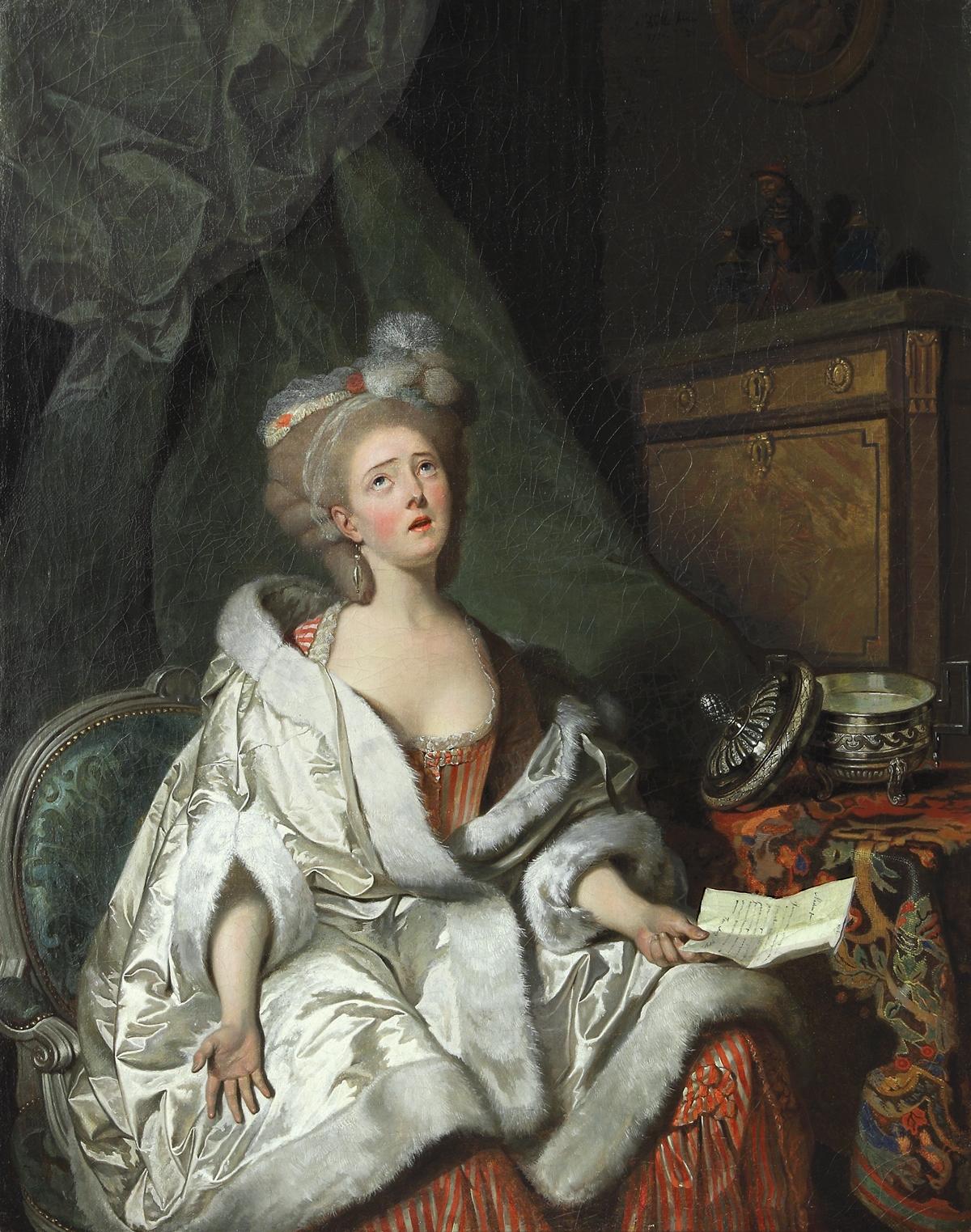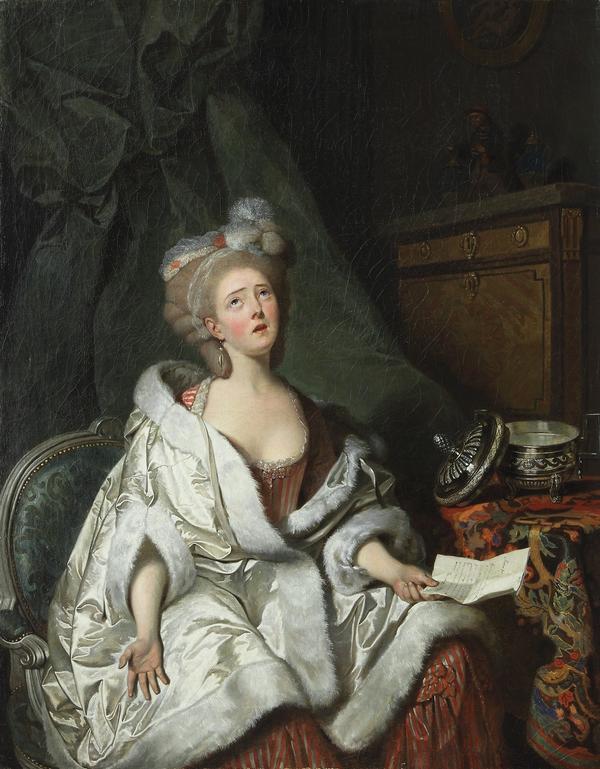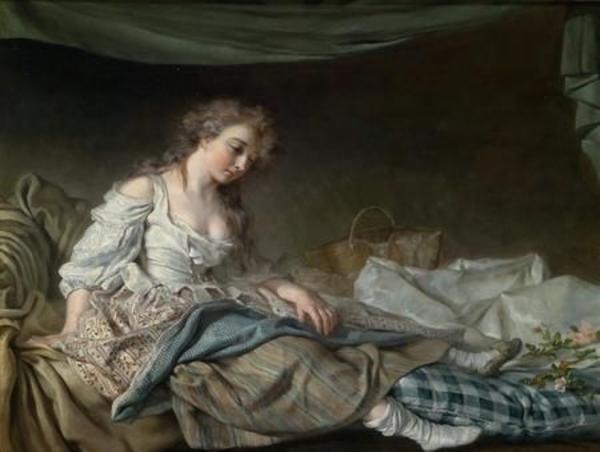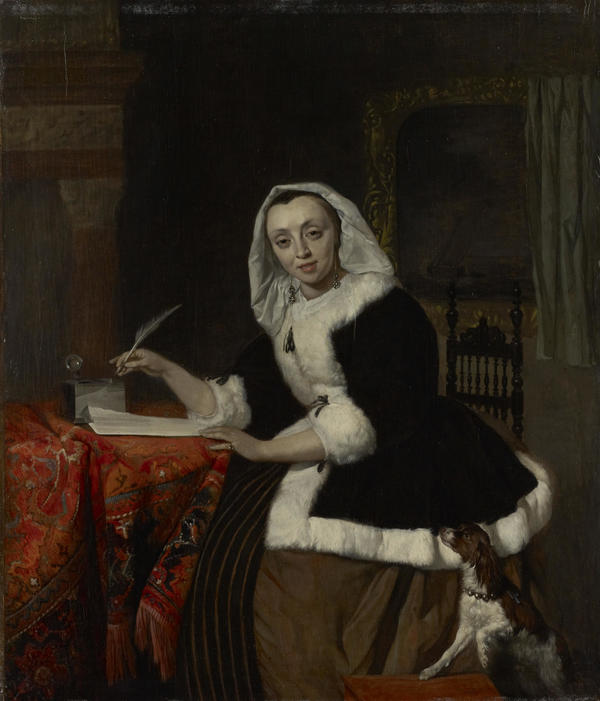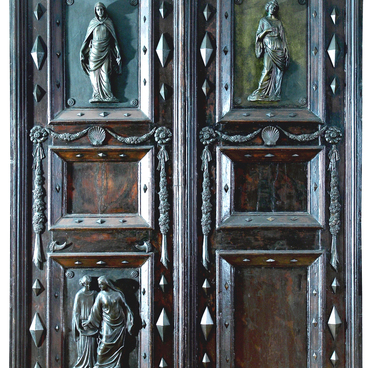Parisian Pierre-Alexander Wille painted the portrait Woman Reading a Letter in 1776. He portrayed a young lady in a luxurious interior. The sitter for Wille’s genre scene is unknown; he could either have been inspired by a true story or created a generalized female image. The master made an emphasis on the woman’s sorrow: she raises her eyes to the sky with her arms spread in a gesture of despair. The reason for her grief is a letter with the illegible lines that she is holding with her weakened fingers. The contents of the letter have remained a mystery. One can only assume that it has to do with a love story. The subject of heart affairs is known to have prevailed in Parisian artworks of the 18th century: the public tastes were under the influence of the manners of King Louis XV, a well-known women’s favorite.
Pierre-Alexandre Wille also has other genre paintings with their characters experiencing deep emotions.
Pierre-Alexandre Wille also has other genre paintings with their characters experiencing deep emotions.
